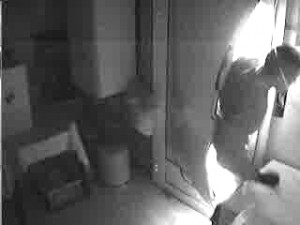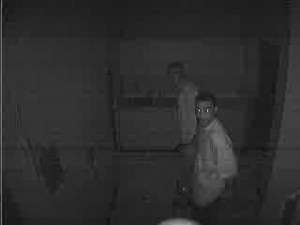ASAP to PSAP: A Preview of Phase II

Front Door Intruders, courtesy Keith Jentoft
Positive changes are coming soon on behalf of the ANSI-approved Automated Secure Alarm Protocol (ASAP) program that will benefit the alarm industry and 9-1-1 PSAPs equally. For the participating 9-1-1 PSAPs in Texas and Virginia, the volume of telephone calls reduced with alarm companies using ASAP to deliver alarm notifications has reached the tens of thousands. When the ASAP program is used, mistakes are eliminated and 9-1-1 processing time amounts to only a few seconds, resulting in significantly reduced response times. The cities of Houston, Texas, and Richmond, Va., have bragging rights because both have stories of law enforcement apprehensions made during true burglary events where an alarm system was triggered. These successes are directly attributable to: (1) good police work of course, and (2) the use of the ASAP program that enables a near-instantaneous dispatch by the communications center resulting in faster responses by public safety responders. A reduction of two to three minutes really does make a difference, not only for police-related alarm notifications, but also for fire and EMS alarms when lives may be at stake.

Smash and grab face shot, courtesy Keith Jentoft
ASAP Phase II, Video Confirmation, to be piloted: The use of video surveillance technology is growing. An increasing number of alarm monitoring companies are now offering video alarm monitoring as an option to their customers, and more customers seem to be taking advantage of this offering. Once an alarm is triggered at a facility equipped with video monitoring, the system enables the alarm monitoring company operator to observe the premises and often can determine if the alarm event is legitimate. The alarm operator may see the household pet that was inadvertently left inside only to trigger the motion detector. In such a case, the alarm company will contact a key-holder, conclude the alarm is false with the concurrence of the key-holder, and the 9-1-1 PSAP never hears about the incident. Even without video confirmation, Call Verification and Enhanced Call Verification procedures will net the same result when a key-holder on premises is contacted, provides a proper code and confirms a known reason for the alarm activation. Again, through this verification procedure, the 9-1-1 PSAP is never notified and the false alarm is handled appropriately by the alarm company without the need for a public safety dispatch.
When a crime is in progress, with video confirmation the alarm operator can see the vehicle that just crashed into a storefront, a robbery in progress or unauthorized subjects on the premises. The alarm operator may see an actual fire or smoke, even a person down when the situation is fire/EMS related. The alarm company operator can quickly initiate an alarm notification to the 9-1-1 PSAP using the ASAP program and include information that confirms an actual event by indicating “alarm confirmed via video” or similar terminology. If the alarm operator has already transmitted the alarm notification to the PSAP, additional updates can be transmitted to the PSAP that will be displayed by the CAD system to the radio operator and field responders instantaneously. These additional comments may contain a description of suspects on scene for example. Many police chiefs throughout the country have endorsed a priority response to alarm events when a legitimate alarm has been confirmed.
Wouldn’t it be wonderful if the 9-1-1 PSAP and public safety field responders could observe the same video feed that the alarm operator is witnessing? Soon this will be a reality for those PSAPs already receiving alarm notification using the ASAP program. A new field has been incorporated into the ASAP data payload called “Alarm Confirmation URI” that will contain a Universal Resource Locator or commonly known as URL by Internet users. The location reference contained in this field will allow the 9-1-1 PSAPs and even field responders to be able to click on this URL to observe the same video that the alarm operator is able to see. Accessibility to the Internet is a prerequisite of course. The alarm industry will be responsible for engineering this solution but people like Keith Jentoft, president of RSI-Videofied is hot on the trail. CAD providers will be responsible for presenting the information to PSAP staff in an easy-to-use manner.
The following is a fictitious example of a positive alarm confirmation and the associated URL where the video can be scene. Typically, this information will be recorded by the CAD system upon receipt from the alarm monitoring company and brought to the radio operator’s attention both visually and audibly immediately. The same updated information should appear for MDC-equipped field responders. Keep in mind that the example below is shown in XML format as scene by the CAD system but the CAD system will only present the critical data to public safety staff, not in XML format.
Example Use
<apco-alarm:AlarmEventAugmentation>
<apco-alarm:AlarmConfirmationText>Verified via video surveillance</apco-alarm:AlarmConfirmationText>
<apco-alarm:AlarmConfirmationURI>http://www.trutv.com/video/most-shocking/worst-burglar-ever.html </apco-alarm:AlarmConfirmationURI>
</apco-alarm:AlarmEventAugmentation>
Latitude/Longitude in Decimal Degrees: In addition to the transmittal of latitude/longitude in degrees, minutes, and seconds, new fields have been added to store the latitude/longitude in decimal degrees.
Example Use
<nc:LocationMapLocation>
<nc:MapHorizontalCoordinateText>37.501308</nc:MapHorizontalCoordinateText>
<nc:MapVerticalCoordinateText>-77.456174</nc:MapVerticalCoordinateText>
</nc:LocationMapLocation>
Alarm Service Organization: New fields have been added to capture the alarm service organization. The service organization may be different from the alarm monitoring company. Many large alarm monitoring companies are wholesalers and monitor alarm systems for smaller companies that do not have their own central stations. Some localities hold the service company responsible for false alarms that are generated by the alarm system and many localities charge the service company rather than the alarm subscriber.
Example Use
<apco-alarm:AlarmServiceOrganization>
<nc:OrganizationIdentification>
<nc:IdentificationID>VA-DCJS12345</nc:IdentificationID>
</nc:OrganizationIdentification>
<nc:OrganizationName>Petersburg Alarm</nc:OrganizationName>
<nc:OrganizationPrimaryContactInformation>
<nc:ContactTelephoneNumber>
<nc:FullTelephoneNumber>
<nc:TelephoneNumberFullID>800-555-1234</nc:TelephoneNumberFullID>
</nc:FullTelephoneNumber>
</nc:ContactTelephoneNumber>
</nc:OrganizationPrimaryContactInformation>
</apco-alarm:AlarmServiceOrganization>
In conclusion, when asked about the ASAP enhancements, Ed Bonifas, immediate past president of the Central Station Alarm Association had this to say: “Whereas the video confirmation URL concept may still take some time to engineer, at least the ASAP schema and payload has been defined with a placeholder to store this information and the CAD providers and Alarm Monitoring Automation providers can prepare their systems to accommodate this revolutionary feature.”
The new fields and other technical advisories concerning the ASAP schema will be released to these providers around Feb. 1.
About the Author
Bill Hobgood is a project manager for the City of Richmond’s DIT Public Safety Team, with 40 years of experience in public safety. He is also a project coordinator for APCO’s Comm Center & 9-1-1 Services Department and a subject matter expert on the ASAP Project. Contact Bill via e-mail. at hobgoodb@apcointl.org

